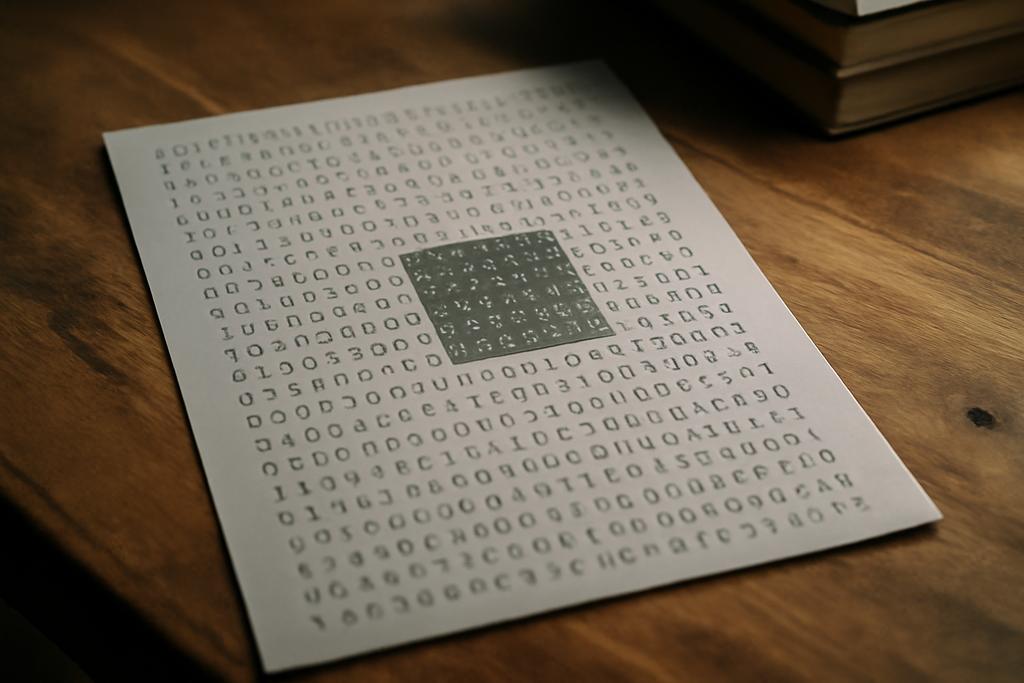Coloring a graph is like organizing a crowded party: you want to seat guests so that neighbors don’t clash, using as few colors as possible for the whole guest list. In the language of math, that’s the chromatic number, χ(G): the minimum number of colors needed to color the vertices of a graph G so that no adjacent vertices share a color. A long-running dream in this field is to bound χ by a function of something simpler about the graph, typically its clique number ω(G), which is the size of the largest group that all pairwise know each other. If you can tighten that relationship, you’ve got a window into how complexity in a network grows from basic structure.
In the world of “bull-free” graphs, a recent result from Sepehr Hajebi at the University of Waterloo nudges us closer to that dream. The study dives into what happens when a particular small pattern — a skewed pentagon that graph theorists call a bull — is forbidden as an induced subgraph. The punchline isn’t just that we can color such graphs with not-too-many colors, but that we can prove a precise, polynomial-type bound that scales with the clique number and with a second parameter that controls how tricky triangle-free parts of the graph can be colored. And perhaps most striking, the proof is remarkably compact by modern standards: Hajebi’s main result comes with a one-page argument that avoids a famously heavy structural toolkit that once seemed essential for these questions.
Before we dive in, credit where it’s due. The work is anchored in the mathematical tradition of structural graph theory, and the author, Sepehr Hajebi, writes from the Department of Combinatorics and Optimization at the University of Waterloo. The result sits in a lively dialogue with prior breakthroughs by Chudnovsky, Safra, and others, but it carves a new path that leans on a simple layering idea rather than the labyrinthine structure theorems that once filled pages of technical papers. That combination — a clean idea that yields strong bounds — is what makes this a story readers can feel as a narrative about how math finds elegance under pressure.
What is a bull and why does it matter?
To picture a bull in a graph, imagine a four-vertex path A–B–C–D, and then add a fifth vertex E that sits next to B and C. The result looks like a little bull: a straight line with two “horns” springing from the middle, the edges AB, BC, CD forming the path and EB, EC forming the horns. In graph-theory speak, a bull is a specific five-vertex induced subgraph. A graph is bull-free if none of its induced subgraphs looks like that pattern.
Why ban bulls? The answer lies in how local patterns constrain global behavior. Bulls sit in a sweet spot: they’re small enough to be a practical constraint, but they still interact with you in nontrivial ways when you try to color a graph. The class of bull-free graphs is itself a broad family — large in scope, rich in structure — and it’s not automatically easy to color. In fact, some bull-free graphs that avoid triangles (three mutual friends in the graph-theory sense) can require arbitrarily many colors. That’s a reminder that forbidding one pattern doesn’t automatically tame the whole coloring problem.
Historically, researchers asked whether knight-like constraints in this class could force a predictable relationship between χ(G) and ω(G). Early progress showed that adding a restriction — every small, low-clique subgraph behaves nicely — could yield polynomial-type bounds on χ in terms of ω. The challenge, though, was the notorious complexity of bull-free graphs: the structure theorems that seemed to unlock everything were long, technical, and difficult to adapt to every variant. Hajebi’s result lands in this landscape as a cleaner, tighter, and more accessible beacon, showing that we don’t always need to reconstruct an entire edifice to gain real insight.
A one-page path around a towering theorem
The heart of Hajebi’s breakthrough is a skeletal, almost surgical approach that avoids what many previous proofs heavyweight structure theorems required. It rests on two known facts and a clever layering idea. The first is a result about the local structure of bull-free graphs: every prime bull-free graph is N-perfect. In plain terms, prime here means the graph has no nontrivial “homogeneous” subset — roughly, no cleanly separable part that all outside vertices either fully see or fully miss. The N-perfect property is a technical gift: it guarantees a certain kind of regularity in neighborhoods around vertices, which makes coloring decisions more predictable when you isolate regions of the graph.
The second ingredient is a nesting of global color bounds that translates nicely from the prime-case to the full graph. A separate, earlier finding by Bourneuf and Thomassé shows that if you know how a class behaves on prime graphs, you can lift that to all graphs in the class with only a modest blow-up in the exponent. That’s the bridge Hajebi uses: leverage the prime bull-free fact, and you get a bound for every bull-free graph, not just the ones that look prime on their own.
Then Hajebi introduces a clean layering argument, something graph theorists often deploy to peel a graph into concentric shells around a chosen root. Start at a vertex v and group the rest of the graph into layers L0, L1, L2, etc., where Li contains all vertices at distance i from v. The strategic move is to color layer by layer, but in a refined way that respects how layers talk to each other. The coloring of Li is built from stable sets — groups of vertices with no internal edges — chosen in a structured cascade. The result is a bound on how many colors you need in each layer, assembled in a way that controls the total count when you sum across layers.
One might say: this is a layering argument done with a scalpel rather than a sledgehammer. It’s not simply throwing colors at a graph; it’s partitioning the graph into digestible chunks and exploiting local regularities to keep the global color count in check. The punchline is precise: for bull-free graphs G in which every triangle-free induced subgraph has chromatic number at most t, Hajebi proves that χ(G) ≤ ω(G)^{4 log_2 t + 13}. In other words, the whole graph’s color needs grow with a polynomial whose exponent depends only on t, and in a way that is asymptotically tight up to constant factors in the exponent.
Why this matters for coloring and beyond
Let’s translate that bound into intuition. If you know the largest clique in a bull-free graph (the largest all-adjacent group) and you know that any triangle-free piece of the graph isn’t too colorful (bounded by t), you now have a concrete ceiling on how many colors you’ll ever need to color the entire graph. The bound is polynomial in ω and, crucially, only grows like a power whose exponent scales with the logarithm of t. That logarithmic dependence is the subtle magic: even as the triangle-free substructures become a bit more color-hungry (larger t), the global bound on χ doesn’t explode rapidly. This is a testament to a gentle, almost ecological balance between local complexity and global order.
From a practical standpoint, such results have implications for algorithms that color graphs under constraints. If you’re working with networks that, by design or by nature, avoid that bull pattern and avoid dense triads, this theorem promises a predictable computational target. It’s not that you’ll magically color a huge network with a tiny palette; rather, you gain a reliable upper bound that scales in a controlled way with simple graph invariants. In a field where worst-case behavior often spirals into intractable darkness, that kind of bound is a bright beacon for both theory and potential applications—from scheduling problems to frequency assignment in communications networks where certain substructures are forbidden by design or naturally avoided by the system.
For the broader story of graph coloring, this result sharpens a long-standing theme: identifying the right forbidden configurations can turn an unruly universe into a navigable landscape. The bull, a small but stubborn motif, serves as a lens for understanding how local restrictions propagate into global behavior. And the fact that a single-page argument can unlock a substantial improvement over prior, heavier machinery is a reminder that elegance and depth aren’t mutually exclusive in mathematics. The University of Waterloo’s Sepehr Hajebi has given the field a compact, robust tool that sits at once on the chalkboard and in the planning notebooks of algorithm designers fetching tractable colorings from trouble-prone graphs.
From labyrinth to layering a new technique
To appreciate the leap, it helps to contrast the old with the new. The older routes to χ-boundedness in bull-free graphs leaned heavily on Chudnovsky’s structure theorem — a towering, multi-paper edifice that dissects bull-free graphs into a mosaic of highly structured pieces. While powerful, that framework is intricate, technical, and not easy to adapt for every problem a researcher wants to pose. Hajebi’s approach deliberately sidesteps that heavyweight toolkit, saving the day with a simple but sharp layering argument and a single, lean result of Chudnovsky and Safra about bull-free graphs.
The layering idea is both intuitive and surprisingly potent. Pick a root vertex and watch how colors must propagate outward. In each layer, Hajebi shows that you can partition the layer into stable blocks and then reason about how those blocks interact with the previous layer. A key ingredient is a careful analysis of how prime induced subgraphs within these layers behave: certain neighborhoods either form perfect subgraphs or have perfect complements, which makes coloring decisions more tractable. It’s a bit like solving a jigsaw by placing a few decisive edge pieces first and then filling in the rest with a well-chosen sequence, rather than reconstructing the entire picture from scratch.
This single-page proof also reshifted the narrative around what counts as a “hard case.” The result hinges on a precise inequality that translates the complexity of triangle-free slices into a global cap on χ, and it does so using only a concise, foundational ingredient and a clever arrangement of layers. It’s a reminder that sometimes, a new perspective on a familiar structure can yield a breakthrough that doesn’t require reinventing the wheel each time you turn a page.
Why the bound is essentially tight and what it implies
The paper doesn’t just present an upper bound; it also demonstrates an asymptotic tightness relative to the level of generality you might hope for. The author shows that any polynomial χ-bounding function for the class Bt (bull-free graphs with the triangle-free subgraphs bounded by t) must have degree larger than about (1/2) log_2 t. In plain language: you can’t hope for a polynomial bound whose degree grows slower than roughly half the logarithm of t, and Hajebi’s bound hits the right qualitative scale. This kind of lower-bound insight helps map the landscape: the result is not a fluke of a clever trick, but a result that tracks the inherent difficulty of colorings in these graphs as t grows.
Beyond the math, there’s a narrative about humility and craft. The one-page proof is not a tour de force of brute force, but a careful synthesis of local structural ideas, a precise layering strategy, and a couple of known, foundational results. That combination achieves a result that previously required far more elaborate machinery. It’s a small bookend to a much larger story: in certain well-behaved graph classes, clever local analysis and a clean global synthesis can outpace the brute force of heavy theorems, offering both clarity and power.
What remains and what comes next
As with many advances in structural graph theory, the next chapter invites both generalization and refinement. Could similar layering arguments yield efficient bounds in other forbidden-subgraph classes, or in bull-free graphs with even sharper invariants? Researchers will likely test the waters by asking whether further simplifications are possible, or whether the exact dependencies on ω and t can be tightened in particular subfamilies of graphs. The Mycielski-based lower bounds included in the work remind us that there are natural barriers, but also that there is room to push the frontier in carefully chosen directions.
From an algorithmic standpoint, these results invite practical considerations. If you know a network is bull-free and you have a handle on the size of the largest clique and the color requirements of triangle-free chunks, you now have a clear target for coloring algorithms: the task is not unbounded chaos but a controlled optimization problem with a polynomial-ish bound guiding expectations. That bridge between abstract bounds and concrete algorithms is where theory increasingly helps practitioners reason about performance guarantees in complex systems—from scheduling tasks to resource allocation in distributed networks.
The study also speaks to a broader theme in mathematics: the delight of finding simple, robust ideas at the heart of deep problems. The layering technique, the N-perfect property, and the way a single-page argument can reorient an entire line of inquiry are not just tricks of the trade; they’re a demonstration of how elegance and depth can coexist. And they underscore a healthy sense of respect for institutional lines of work. The University of Waterloo, through Sepehr Hajebi’s work, joins a lineage of researchers who remind us that breakthroughs often come from looking at a familiar pattern with fresh eyes, asking the right questions, and letting a modest tool do the heavy lifting.










